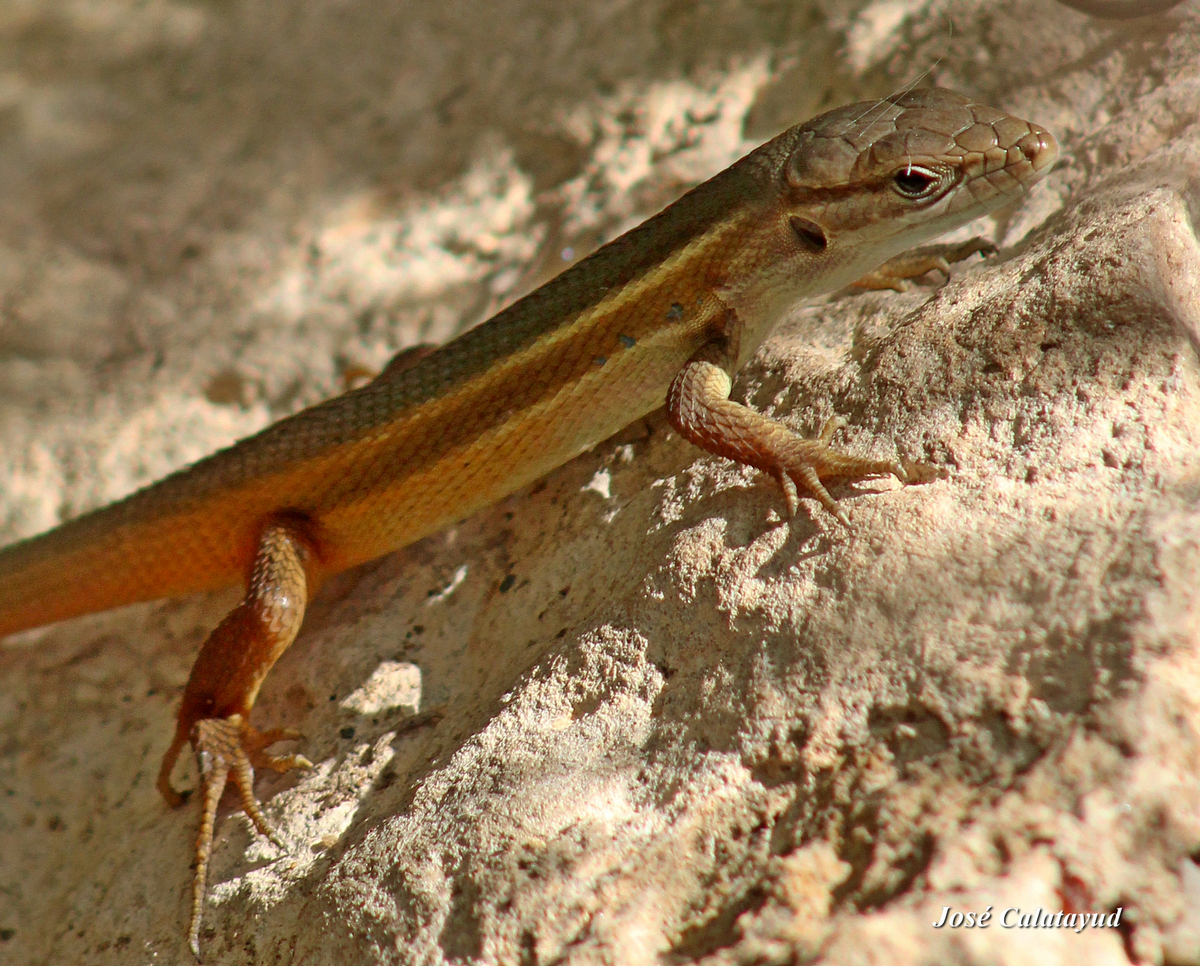The photo was taken in the Montes de Málaga, a hilly and wooded nature park bordering the city of the same name. The Algerian sand lizard (Psammodromus algirus) is a slender, medium to large lizard, reaching a total length of 27 to 32 cm, more than half of which is made up of its very long, thin tail. It is characterised by a pointed snout and pointed, strongly keeled and overlapping dorsal and caudal scales. Its main colouring is brown to coppery brown, often tinged with green in some individuals, with two narrow, light-coloured (white, yellow or orange) lateral bands outlined in black on the flanks, and a possible dark dorsal line on the back. The ventral surface is white to cream.
This typically Mediterranean lizard is found on the Iberian Peninsula, in southern France and in North Africa (from Morocco to Tunisia). The Algerian sand lizard frequents open, sunny habitats such as light forests, scrubland, garrigue and sandy areas, where it is very agile and fast. It is mainly diurnal and feeds mainly on insects (beetles, ants, grasshoppers) and spiders, but sometimes eats some plants. Males display more bright throat colours (yellow, orange or red) during the breeding season. Juveniles are darker with more pronounced stripes that fade with age.
Source: Les carnets de Jessica, Wikipedia, Perplexity.ai




 English
English